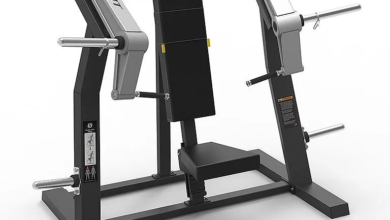When Did FDA Approve Laser Hair Removal?

Laser hair removal has become a popular and effective method for achieving long-term hair reduction and smoother skin. However, its journey to approval by the United States Food and Drug Administration (FDA) was marked by rigorous testing and evaluations. In this article, we will explore the timeline of when FDA approved laser hair removal, shedding light on the evolution of this technology and its safety.
1970s – Laser Technology Emerges
The development of laser technology as a potential method for hair removal began in the 1970s. Early experiments were conducted to explore the use of lasers to selectively target and damage hair follicles without harming surrounding skin. The IPL hair removal device effectiveness is enhanced when used consistently over time.
1995 – FDA Clearance for the First Laser Device
The FDA cleared the first laser hair removal device, the Softlight, for commercial use in 1995. However, it’s important to note that this clearance was for “permanent hair reduction” rather than “permanent hair removal.” This means that the device could claim to reduce hair significantly, but it might not result in complete hair removal.
1997 – First Laser Hair Removal Device Approval
The Epilight, a laser hair removal device, received full FDA approval for hair removal in 1997. This was a significant milestone as it marked the first time the FDA officially recognized a laser device as capable of achieving permanent hair removal.
1998 – FDA Approval for Different Skin Types
In 1998, the FDA granted approval for laser hair removal devices to be used on a wider range of skin types. This expansion broadened the accessibility of the treatment to individuals with diverse complexions. Skin type and hair color can affect the effectiveness of laser hair removal at home, so it’s essential to choose a device suitable for your specific needs.
2000 – Improved Safety and Efficacy
Throughout the late 1990s and early 2000s, advances in laser technology and treatment protocols improved both safety and efficacy. Newer devices, such as those utilizing diode lasers, made the procedure more comfortable and efficient.
2010s – Continued Advancements
The 2010s witnessed further refinements in laser hair removal technology, including devices that offered better precision and faster treatment times. These advancements have made the procedure even more appealing to a broader audience.
Present Day – Widely Accepted and Popular
Laser hair removal is now a widely accepted and popular method for achieving long-term hair reduction. Numerous FDA-approved devices are available in the market, providing efficient and effective treatments.
It’s important to note that while the FDA has approved various laser hair removal devices, individual results may vary based on factors such as hair color, skin type, and the quality of the device used. Multiple treatment sessions are usually required to achieve optimal results. Additionally, some people may experience hair regrowth over time, requiring occasional maintenance sessions.
Conclusion
The FDA approval of laser hair removal marked a significant turning point in the field of cosmetic and dermatological procedures. It signified the acceptance of laser technology as a safe and effective method for achieving long-term hair reduction. Since the initial approvals in the 1990s, laser hair removal technology has continued to evolve, offering improved safety, efficiency, and comfort.
Today, laser hair removal is a trusted and widely practice method that has helped countless individuals achieve smoother and hair-free skin. It’s important to consult with a qualified and experienced practitioner or dermatologist when considering laser hair removal to ensure that the treatment is tailored to your unique needs and skin type.




